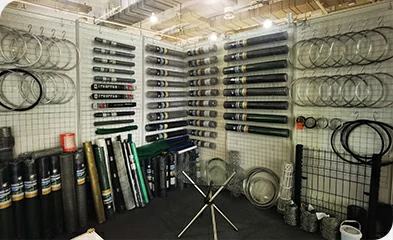 TEL:
+86-13102802206
TEL:
+86-13102802206
 Email:
fencenetting@china.com
Email:
fencenetting@china.com
 Language
Language
 TEL:
+86-13102802206
TEL:
+86-13102802206
 Email:
fencenetting@china.com
Email:
fencenetting@china.com
 Language
Language


The Cost of Fencing Understanding Barbed Wire Pricing
When it comes to securing properties, barbed wire fencing has long been a popular choice due to its effectiveness and affordability. Whether for agricultural purposes, securing livestock, or enhancing the security of residential and commercial properties, many consider barbed wire as a primary fencing option. However, the price of barbed wire can vary significantly based on several factors, including material type, gauge, coating, and market trends.
Understanding Barbed Wire Specifications
Barbed wire is typically composed of high-tensile steel or low-carbon steel, which determines its strength and durability. The gauge of the wire also plays a crucial role in pricing; common gauges range from 12.5 to 18, with lower numbers indicating thicker wire. Thicker wires generally provide better security and durability, but they may also come with a higher price tag.
One crucial factor influencing the cost of barbed wire is its coating. Barbed wire can be galvanized, which involves coating the wire with a layer of zinc to prevent rusting. Galvanization increases the longevity of the fence, particularly in harsh weather conditions, making it a worthwhile investment despite potentially higher upfront costs. Barbed wire can also be coated with PVC or other substances, adding another layer of protection and often affecting the final price.
Market Trends and Regional Differences

Like many commodities, the price of barbed wire is influenced by market conditions. Global steel prices, economic fluctuations, and demand levels from agriculture and construction sectors all play a significant role in determining the cost. For instance, during times of economic growth, the demand for construction projects may drive up steel prices, consequently affecting the cost of barbed wire.
Additionally, regional differences in pricing can also be observed. In areas with high agricultural activity, such as rural communities, barbed wire may be more readily available, potentially leading to lower prices due to competition among local suppliers. Conversely, in urban settings where such fencing is less prevalent, prices may be higher due to limited supply and higher shipping costs.
Estimating Costs
As of recent market data, the price of barbed wire can range from approximately $0.10 to $0.50 per linear foot, depending on the aforementioned factors. For an average-sized field or property, the total cost of fencing with barbed wire can add up quickly. Installation costs should also be considered, as hiring professionals can significantly increase the overall expenditure. DIY projects may save labor costs, but careful consideration must be given to the necessary tools and materials, not to mention the time commitment.
Conclusion
Investing in barbed wire fencing can provide a reliable solution for property security, but understanding the factors influencing its price is essential for making informed purchasing decisions. As with any commodity, staying informed about market trends, regional pricing, and material choices will empower property owners to select the best fencing solution within their budget. By weighing the upfront costs against the long-term benefits of durability and security, individuals and businesses can effectively safeguard their properties without compromising on quality or cost-effectiveness. In a world where security is paramount, a well-chosen barbed wire fence can provide both peace of mind and a solid return on investment.